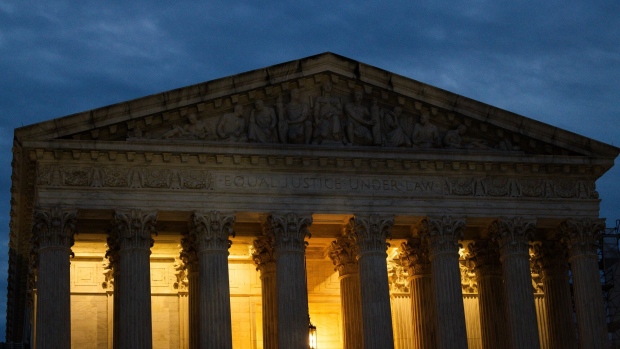Jun 27, 2024
Supreme Court Blocks EPA’s ‘Good Neighbor’ Ozone Emissions Rule
, Bloomberg News

(Bloomberg) -- The US Supreme Court blocked for the foreseeable future a Biden administration rule that would mean stringent new emissions requirements on power plants and pipelines in parts of the country to stem ozone pollution that wanders into downwind states.
The justices, voting 5-4, put the Environmental Protection Agency’s “good neighbor” rule on hold while courts consider challenges pressed by upwind states, industry groups and companies led by Kinder Morgan Inc. A dissenting opinion said the majority ignored EPA’s authority in protecting air quality standards.
The delay could be a lengthy one given that litigation over the 2023 rule is in its early stages. The focus now shifts to a federal appeals court, which will take the first look at the challenges.
The Supreme Court order halts a rule that would have applied to 11 states, a number that had already been cut from 23 because of separate legal battles. A key issue in the fight was whether the EPA had adequately considered whether its approach was warranted even if it applied to only a subset of upwind states. The rule was originally scheduled to take effect last August.
Conservative Justice Neil Gorsuch wrote for the majority that delaying the rule is warranted because the challenging states are likely to succeed, while Justice Amy Coney Barrett wrote a dissent blasting her fellow conservatives for downplaying EPA’s authority to regulate air quality. The court’s three liberals joined her.
The EPA said in a statement the court’s ruling will postpone the benefits the policy is already achieving. The plan “is essential to ensure that states satisfy their responsibility under the Clean Air Act to address pollution that significantly contributes to unhealthy levels of ground-level ozone, or smog, in other states.”
Gorsuch wrote that the rule likely runs afoul of “long-settled standards,” including that agencies offer satisfactory explanations for new requirements. The justice noted that EPA issued the rule despite court challenges that blocked its implementation in several states.
“But in doing so, EPA did not address whether or why the same emissions-control measures it mandated would continue to further the FIP’s stated purpose of maximizing cost-effective air-quality improvement if fewer states remained in the plan,” Gorsuch wrote, referring to the so-called Federal Implementation Plan.
Barrett’s dissent, joined by Justices Sonia Sotomayor, Elena Kagan and Ketanji Brown Jackson, faulted the majority for overlooking what she described as EPA’s statutory role “in ensuring that states meet air-quality standards” and said challenging states are not likely to prevail.
“The court today enjoins the enforcement of a major Environmental Protection Agency rule based on an underdeveloped theory that is unlikely to succeed on the merits,” Barrett wrote. “In so doing, the court grants emergency relief in a fact-intensive and highly technical case without fully engaging with both the relevant law and the voluminous record.”
The challengers — Ohio, Indiana and West Virginia — contended the rule would impose billions of dollars in costs in the first year alone and threaten the reliability of the electricity grid by forcing generators into early retirement.
The Biden administration said the rule would protect the health of people in downwind states suffering from emissions by their neighbors. The administration was backed by a group of downwind states led by New York.
The rule is part of a two-pronged EPA approach that relies on the rejection of state plans to curb ozone followed by the imposition of a federal alternative. A number of states have managed to freeze the rejection component of EPA’s plan, reducing the reach of the alternative.
The justices took the unusual step of holding an argument session in the case even though they were considering only a request for an interim order as part of the court’s emergency docket.
The case is Ohio v. Environmental Protection Agency, 23A349.
--With assistance from Jennifer Hijazi.
(Updates with comment from the EPA.)
©2024 Bloomberg L.P.






